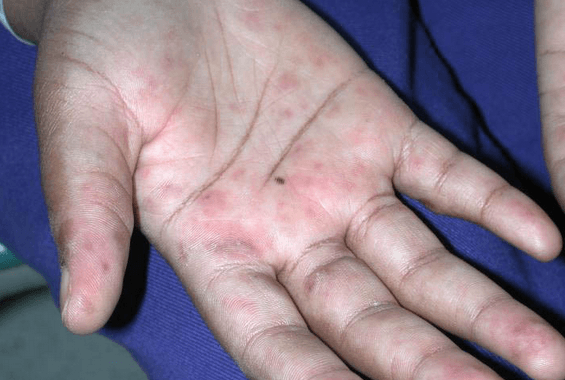Extreme fatigue and joint pain are two common symptoms that can significantly impact a person’s quality of life. These symptoms can be caused by various factors, including medical conditions and lifestyle choices such as lack of physical activity. Understanding the underlying causes is essential for managing and addressing extreme fatigue and joint pain. This article will discuss 16 common causes of extreme fatigue and joint pain.
What are Extreme Fatigue and Joint Pain?
Extreme fatigue refers to an overwhelming and persistent feeling of tiredness and lack of energy that goes beyond normal tiredness. It can significantly impact daily functioning and quality of life.
Joint pain, on the other hand, refers to discomfort, inflammation, and stiffness in the joints. It can occur in one or multiple joints throughout the body and may vary in severity. Joint pain can make it difficult to perform regular activities and can be accompanied by a limited range of motion and swelling.
Extreme fatigue and joint pain can occur together and are often associated with various medical conditions, such as rheumatoid arthritis, fibromyalgia, or chronic fatigue syndrome. Additionally, lifestyle factors such as lack of physical activity, and poor sleep habits can contribute to extreme fatigue and joint pain.

16 Common Causes of Extreme Fatigue and Joint Pain
Extreme fatigue and joint pain can be caused by various factors.
1. Rheumatoid Arthritis
Rheumatoid arthritis is a chronic autoimmune disorder that causes inflammation of the joints, leading to pain, swelling, stiffness, and damage to the joint tissue.
It typically affects the small joints of the hands, feet, and wrists, but can also affect larger joints such as the knees, hips, and shoulders. Other symptoms may include fatigue, muscle weakness, weight loss, fever, and anemia.
Causes: The immune system mistakenly attacks the joints, causing inflammation and damage.
Treatment: There is no cure for rheumatoid arthritis, but treatment can help to manage the symptoms and slow the progression of the disease. Treatment options may include medications, physical therapy, occupational therapy, and surgery.
2. Osteoarthritis
Osteoarthritis is a degenerative joint disease that occurs due to the breakdown of cartilage, the protective tissue that cushions the ends of bones. As cartilage breaks down, bones rub together, causing pain, stiffness, swelling, and decreased range of motion.
Osteoarthritis typically affects weight-bearing joints such as the knees, hips, and spine, but can also affect other joints such as the hands, feet, and neck.
Causes: Osteoarthritis is caused by a combination of factors, including age, obesity, joint injury, and genetics. As we age, the cartilage in our joints naturally breaks down. Obesity puts extra stress on the joints, which can lead to cartilage damage. Joint injuries can also damage cartilage and increase the risk of developing osteoarthritis.
Treatment: There is no cure for osteoarthritis, but treatment can help to manage the symptoms and slow the progression of the disease. Treatment options may include weight loss, exercise, physical therapy, occupational therapy, medications, and surgery.
3. Fibromyalgia
Fibromyalgia is a chronic condition characterized by widespread muscle pain, tenderness, and fatigue. Other symptoms may include sleep disturbances, cognitive difficulties, headaches, and irritable bowel syndrome.
The exact cause of fibromyalgia is unknown, but it is thought to involve changes in the way the brain processes pain signals.
Causes: The exact cause of fibromyalgia is unknown, but it is thought to involve a combination of genetic, environmental, and psychological factors.Certain environmental factors, such as stress, trauma, and infections, may trigger fibromyalgia in people who are genetically predisposed to the condition.
Treatment: There is no cure for fibromyalgia, but treatment can help to manage the symptoms and improve the quality of life. Treatment options may include medications, physical therapy, occupational therapy, and cognitive behavioral therapy.

4. Lupus
Lupus is an autoimmune disorder that can affect multiple organs, including the joints, skin, kidneys, and heart. Joint pain is a common symptom of lupus, and it can range from mild to severe. Other symptoms may include fatigue, skin rashes, hair loss, kidney problems, and anemia.
Causes: The immune system mistakenly attacks the body’s tissues, causing inflammation and damage.
Treatment: There is no cure for lupus, but treatment can help to manage the symptoms and prevent complications. Treatment options may include medications, lifestyle changes, and surgery.
5. Sjogren’s Syndrome
Sjogren’s syndrome is an autoimmune disorder that affects the exocrine glands, which produce saliva and tears. This can lead to dry eyes, dry mouth, and other symptoms such as joint pain, fatigue, skin rashes, and swollen salivary glands.
Causes: The exact cause of Sjogren’s syndrome is unknown, but it is thought to involve a combination of genetic and environmental factors. The immune system mistakenly attacks the exocrine glands, causing inflammation and damage.
Treatment: There is no cure for Sjogren’s syndrome, but treatment can help to manage the symptoms and improve quality of life. Treatment options may include artificial tears, saliva substitutes, medications, and lifestyle changes.
6. Vasculitis
Vasculitis is inflammation of blood vessels, which can cause a variety of symptoms depending on which blood vessels are affected. Joint pain, fatigue, fever, and weight loss are common symptoms of vasculitis.
Causes: The immune system mistakenly attacks the blood vessels, causing inflammation and damage.
Treatment: There is no cure for vasculitis, but treatment can help to manage the symptoms and prevent complications. Treatment options may include medications, lifestyle changes, and surgery.
7. Lyme Disease
Lyme disease is a bacterial infection transmitted by ticks. In its early stages, it can cause a characteristic bullseye rash. If left untreated, Lyme disease can spread to other parts of the body, including the joints, heart, and nervous system. Joint pain, fatigue, fever, and headaches are common symptoms of Lyme disease.
Causes: Lyme disease is caused by the bacterium Borrelia burgdorferi, which is transmitted to humans through the bite of an infected tick.
Treatment: Lyme disease can be treated with antibiotics. Early treatment is important to prevent the infection from spreading to other parts of the body.
8. Chronic Fatigue Syndrome (CFS)
Chronic fatigue syndrome is a condition characterized by extreme fatigue that does not improve with rest and that lasts for at least six months. Other symptoms may include muscle pain, headaches, difficulty concentrating, and sleep disturbances. The exact cause of CFS is unknown.
Causes: Some people with CFS have a family history of the condition, suggesting that there may be a genetic component.
In addition, certain environmental factors, such as stress, trauma, and infections, may trigger CFS in people who are genetically predisposed to the condition.
Treatment: There is no cure for CFS, but treatment can help to manage the symptoms and improve quality of life. Treatment options may include medications, lifestyle changes, and cognitive behavioral therapy.
9. Hypothyroidism
Hypothyroidism is an underactive thyroid gland, which can lead to a variety of symptoms, including fatigue, joint pain, weight gain, constipation, and dry skin.
Causes: Hypothyroidism can be caused by a variety of factors, including autoimmune disorders, thyroid surgery, and radiation therapy.
Treatment: Hypothyroidism is treated with thyroid hormone replacement medication.
10. Iron Deficiency Anemia
Iron deficiency anemia is a condition caused by a lack of iron, which is essential for the production of red blood cells. Red blood cells carry oxygen throughout the body, so iron deficiency can lead to fatigue, joint pain, shortness of breath, and pale skin.
Causes: Iron deficiency anemia can be caused by a variety of factors, including blood loss, poor diet, and certain medical conditions.
Treatment: Iron deficiency anemia is treated with iron supplements.
11. Vitamin D Deficiency
Vitamin D is essential for bone health, but it also plays a role in muscle function and immune system health. D deficiency can cause fatigue, joint pain, muscle weakness, and an increased risk of fractures.
Causes: Vitamin D deficiency can be caused by a lack of sunlight exposure, poor diet, and certain medical conditions.
Treatment: Vitamin D deficiency is treated with vitamin D supplements.
12. Sleep Apnea
Sleep apnea is a condition in which breathing repeatedly stops and starts during sleep. This can lead to fatigue, joint pain, headaches, and difficulty concentrating.
Causes: Sleep apnea can be caused by a variety of factors, including obesity, enlarged tonsils, and a narrow airway.
Treatment: Sleep apnea is treated with a variety of methods, including lifestyle changes, oral appliances, and surgery.
13. Depression
Depression is a mental health disorder that can cause a variety of physical symptoms, including fatigue, joint pain, headaches, and digestive problems.
Causes: Depression can be caused by a variety of factors, including genetics, life events, and medical conditions.
Treatment: Depression is treated with a variety of methods, including medication, psychotherapy, and lifestyle changes.
14. Multiple Sclerosis (MS)
Multiple sclerosis is a neurological disorder that affects the brain and spinal cord. Symptoms of MS can vary depending on which part of the nervous system is affected, but fatigue, joint pain, muscle weakness, and vision problems are common.
Causes: The exact cause of MS is unknown, but it is thought to involve a combination of genetic and environmental factors.
Treatment: There is no cure for MS, but treatment can help to manage the symptoms and slow the progression of the disease. Treatment options may include medications, lifestyle changes, and physical therapy.
15. Cancer
Some types of cancer, such as leukemia and lymphoma, can cause fatigue, joint pain, and other symptoms.
Causes: Cancer is caused by the uncontrolled growth of abnormal cells in the body.
Treatment: Cancer treatment depends on the type of cancer and the stage of the disease. Treatment options may include surgery, chemotherapy, radiation therapy, and targeted therapy.
16. Medications
Certain medications, such as statins, blood thinners, and some antibiotics, can cause fatigue and joint pain as side effects.

10 Home for Extreme Fatigue and Joint Pain
Here are 10 best home remedies for extreme fatigue and joint pain:
1. Rest and Sleep
Adequate rest and quality sleep are crucial for managing extreme fatigue and joint pain. Create a sleep routine by going to bed and waking up at consistent times.
Prioritize creating a sleep-friendly environment by keeping the room dark, quiet, and at a comfortable temperature. You can also consider relaxation techniques, such as deep breathing exercises, to promote better sleep.
2. Hot and Cold Therapy
Heat therapy can help relax muscles, increase blood flow, and reduce joint pain. Apply a heating pad, or warm towel, or take a warm bath to soothe sore joints.
Cold therapy, on the other hand, can help reduce inflammation and numb the area. You can use ice packs wrapped in a thin towel, a bag of frozen vegetables, or cold compresses on the affected joints.
3. Gentle Exercise
Engaging in regular low-impact exercises can improve joint flexibility, strengthen muscles, and boost energy levels. Walking, swimming, and cycling are excellent options. Start with gentle stretches to warm up the muscles before exercising.
4. Weight Management
Maintaining a healthy weight is essential for reducing stress on the joints. Excess weight can exacerbate joint pain and fatigue. Focus on a balanced diet that includes fruits, vegetables, lean proteins, whole grains, and healthy fats. Portion control and moderation are key. Incorporate regular exercise to promote weight management and overall well-being.

5. Balanced Diet
A nutrient-rich diet is crucial for managing extreme fatigue and joint pain. Include foods that have anti-inflammatory properties, such as fatty fish (salmon, sardines), turmeric, ginger, berries, nuts, and seeds.
These foods can help reduce inflammation and support joint health. Besides it can also provide essential nutrients for overall well-being.
6. Omega-3 Fatty Acids
Omega-3 fatty acids have anti-inflammatory properties and may help alleviate joint pain and stiffness. Increase your intake of omega-3 fatty acids like fatty fish (salmon, mackerel, sardines), flaxseeds, chia seeds, and walnuts. If needed, consult with a healthcare professional about omega-3 fatty acid supplements.
7. Stress Management
Chronic stress can worsen fatigue and joint pain. Implement stress management techniques to promote relaxation and overall well-being.
Deep breathing exercises, meditation, yoga, tai chi, or engaging in hobbies that bring joy and relaxation can help reduce stress levels.
8. Warm Baths or Showers
Soaking in warm baths or taking warm showers can provide temporary relief from joint pain and muscle stiffness. The warm water helps relax the muscles and improve circulation.
Enhance the experience by adding Epsom salts, which contain magnesium that can further aid muscle relaxation. Adding a few drops of essential oils like lavender or chamomile can also promote relaxation.
9. Herbal Remedies
Some herbs have natural anti-inflammatory properties and may help alleviate joint pain. Turmeric, ginger, and Boswellia are commonly used for their potential benefits.
Turmeric contains curcumin, a compound with anti-inflammatory properties. Ginger has been traditionally used for its analgesic and anti-inflammatory effects. Boswellia extract derived from the Boswellia serrata tree has been studied for its potential to reduce inflammation.
10. Supportive Devices
Assistive devices can provide support and reduce strain on the joints during daily activities. Braces, splints, or compression sleeves can help stabilize and protect affected joints. Ergonomic tools, such as padded handles or grips, can make tasks easier and reduce joint stress.
When to Seek Medical Help?
While self-care practices can be beneficial, it is important to be aware of red flags and warning signs that may indicate the need for medical intervention.
Seek medical help if you experience:
- Severe or worsening joint pain
- Sudden or unexplained weight loss
- Persistent fatigue that interferes with daily activities
- Signs of infection, such as fever or chills






